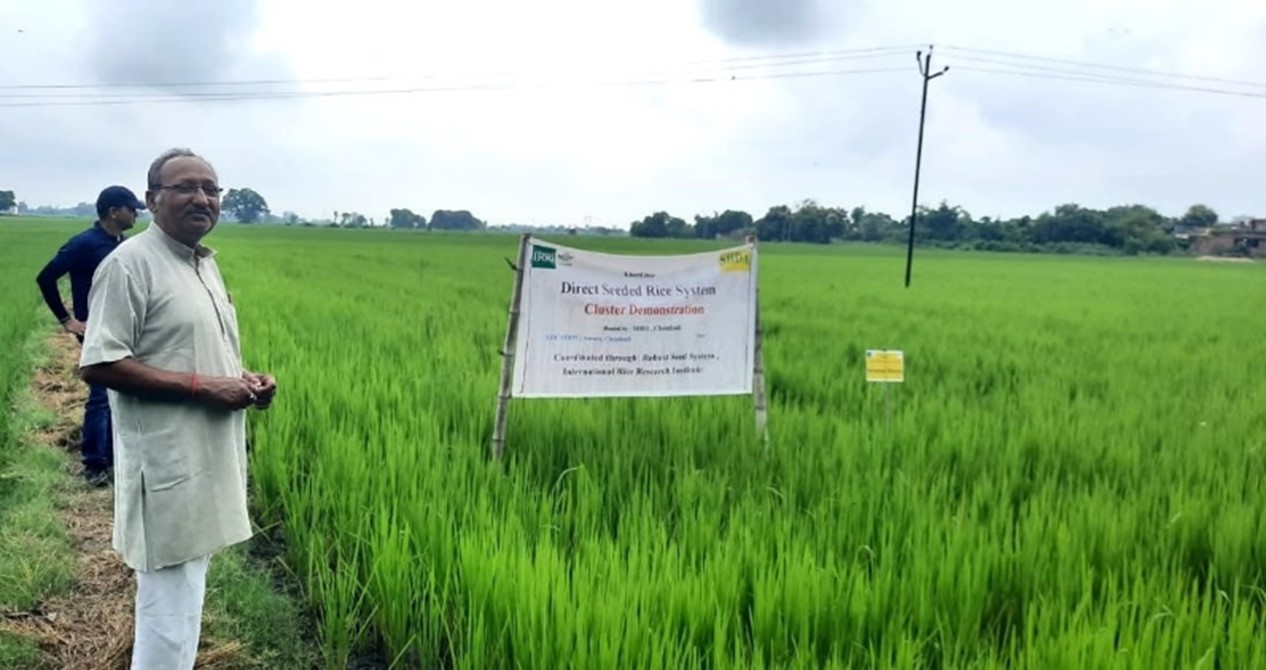Tackling labor shortages and water scarcity in Chandauli District through direct-seeded rice
- From
-
Published on
17.03.25
- Impact Area

By Sarvesh Shukla, Anirban Nath, Neeraj Tyagi, Swati Nayak, Mosharaf Hossain
While resistant to change and wary of risk, more and more rice farmers are taking small steps to adopt more sustainable cultivation methods such as direct-seeded rice, and they are discovering its economic benefits.
Chandauli District, known as the Rice Bowl of Uttar Pradesh, has been grappling with a severe labor crisis for several years, significantly impacting its rice productivity. With labor shortages, particularly during peak transplanting periods, and increasing cultivation costs, farmers in the region are in search of more efficient and sustainable rice farming methods. The traditional transplanting method, which is both labor-intensive and water-demanding, is no longer viable for many farmers, especially as the region faces erratic monsoon rains and depleting water resources.
Mr. Shashikant Roy, a 63-year-old farmer from Amara village in the Barahani block of Chandauli, has been engaged in agriculture for more than 30 years, cultivating a total of 48 acres—14 acres of his own land and the remainder rented. Confronted with persistent labor shortages and rising transplanting costs, Mr. Roy has decided to explore more labor—and water-efficient methods.
He learned about direct-seeded rice (DSR) as a potential solution. After receiving preliminary training from the local Krishi Vigyan Kendra (KVK), Mr. Roy was given a seed drill machine and applied the DSR method on 2 acres of land.
Despite some initial success with DSR, he found that the yields from the varieties he traditionally cultivated, such as MTU7029 (Swarna), were lower under DSR than the conventional puddled transplanted rice method. Through the KVK, he learned about efforts by the International Rice Research Institute (IRRI) to identify rice varieties suited for DSR for his district under the Scale Direct Project.
Related news
-

Translating Climate, Peace, Security and Displacement Research into Policy and Action
Ibukun Taiwo21.11.25-
Climate adaptation & mitigation
Three years ago, the CGIAR Climate Security team of the Alliance of Bioversity International and …
Read more -
-

Bridging science, finance, and restoration: Insights from the sustainable beef investment roundtable
Multifunctional Landscapes Science Program17.11.25-
Climate adaptation & mitigation
Rome, 2–4 October 2025 — The Sustainable Beef Investment Roundtable brought together over 50 pa…
Read more -
-

COP30 Week 1: Negotiation Highlights and CGIAR Perspectives
Climate Action Science Program17.11.25-
Adaptation
-
Climate adaptation & mitigation
-
Mitigation
Week 1 of COP30 in Belém, Brazil – set against the backdrop of the Amazon…
Read more -
